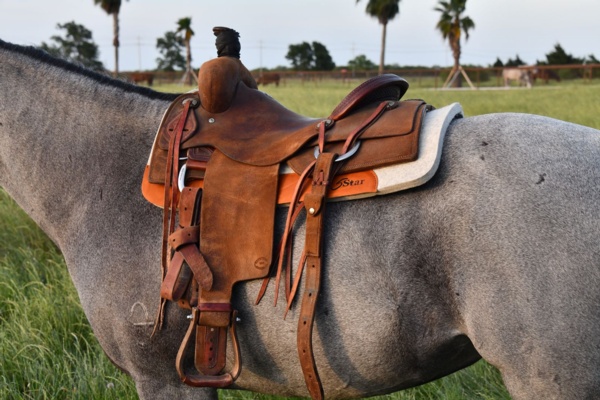STT Saddle Fit: Nothing to Hide
South Texas Tack owner Steve Martin has “been horseback six days a week” for as long as he can remember, and has life-long involvement in the show, roping, and cutting worlds. Consequently, he has seen his share of poorly fitting saddles, and the negative affect they have on horses and performance.
Now, this working knowledge plays a vital role in the saddles made by South Texas Tack.
“When we got into the tack market, we noticed the vast number of saddles made today were grossly inadequate for today’s Western horse,” Martin said. “You also see makers who do not own a horse trying to serve horsemen and horsewomen, so there’s often a breakdown in communication.”
In contrast, he said the saddle makers and staff at South Texas Tack have been in the horse business and have saddled horses almost every day since they were kids; they know plenty about saddle fitting courtesy years of trial and error.
“We hire people who actually have some institutional knowledge to build our saddles and trees. Myself and the managers design the trees to fit today’s Western horse, and we have a setup that fits just about everything. On rare occasion we may have to build a special tree, and we can, because we know where to go since we know where we started,” he said. “That’s where many makers can’t complete the circle—they don’t have communication with the tree builder to institute changes. Saddle fit is a big part of what we do here,” he added. “Our saddle fitting reputation is better than any advertising we could do.”
In fact, helping customers with saddle fit quickly became a staple at the store.
“There’s no obligation, and we don’t charge for it,” Martin said. “We just ask people to bring their horse and saddle to the store so that we can analyze it and give them a plan for a good-fitting saddle. We fit the horse, then the rider, and it is relatively easy to do,” he continued. “We get some skeptics, but once they actually see our trees on the horse it doesn’t take long for them to see the difference.”
Additionally, he has even helped owners evaluate saddle fit via e-mail.
“Our reputation has allowed us to do that,” he added.
In Martin’s experience, many people know what incorrect fit looks like; they don’t really know what correct fit looks like.
“It’s our job to show them the difference,” he said. “Most people only want to focus on the gullet, but we focus on the bar shape and spread. To me, the gullet is like the collar on my shirt. I don’t really care if I can button the collar, but the bar spread is like my shoulders. I want to be able to move and flex in that shirt, and allow for good range of motion. Bar shape and spread is critical,” he added.
Martin breaks down the areas that South Texas Tack evaluates for both horse and rider fit and shares some mistakes, myths, challenges and cleaning tips as well.
When an owner brings a horse to South Texas Tack for saddle fit advice
Martin says they evaluate three main areas:
1. Shoulder Symmetry
First, we make sure the horse is standing square, and we evaluate how symmetrical the horse is. Most horses over seven to 10 years old are not symmetrical as far as shoulder and wither development. We want to evaluate, and accommodate, the wider side first. If the wider side happens to be the off side (right side) we want to make sure it is addressed, and not skipped if we only focus on fitting the near side (left side). We also ask what the horse is used for, which can play into symmetry (via factors like weight, muscle development or injury for example).
2. Bar flare/Tree
Once we evaluate the horse for symmetry and use, we begin by fitting the horse without a saddle pad. We want to see flare in the front of that bar. This means that we should see the tree and skirt pull away from the horse’s shoulder one-half to three-fourths of an inch, making it easy to get a hand between the bar and horse’s shoulder. Flare is important because it allows range of motion so the horse can freely move forward, backward or laterally. And, we want to leave room to add a three-fourths or one-inch saddle pad without affecting fit.

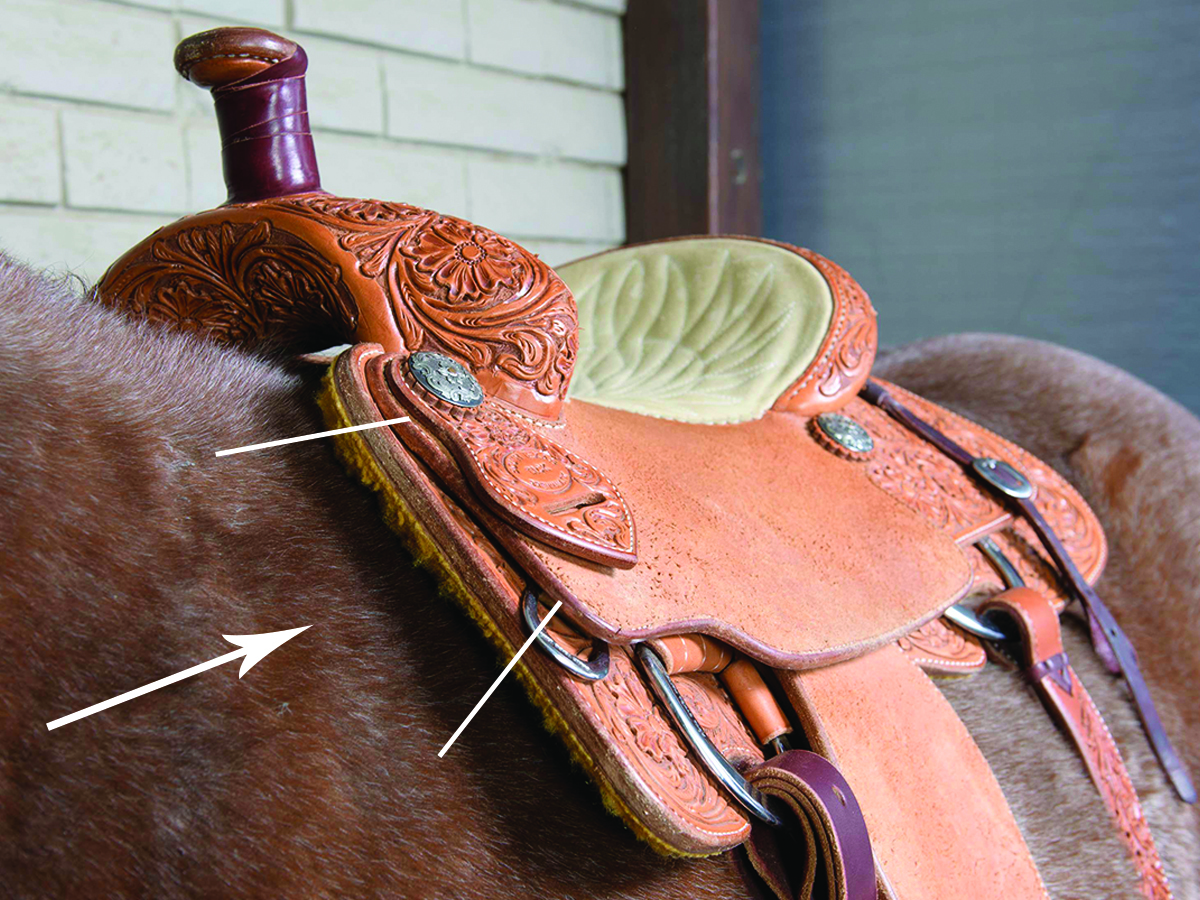
3. Withers and back
Once we are confident of sufficient flare and that the standard setup (tree) that we chose is adequate, we reach down in the gullet and feel the withers. As the withers taper down, the bars should follow the contour of the horse’s back. This is important, because if they don’t, there will be some bridging (gaps where the bars don’t touch the back) which really causes discomfort. (1)
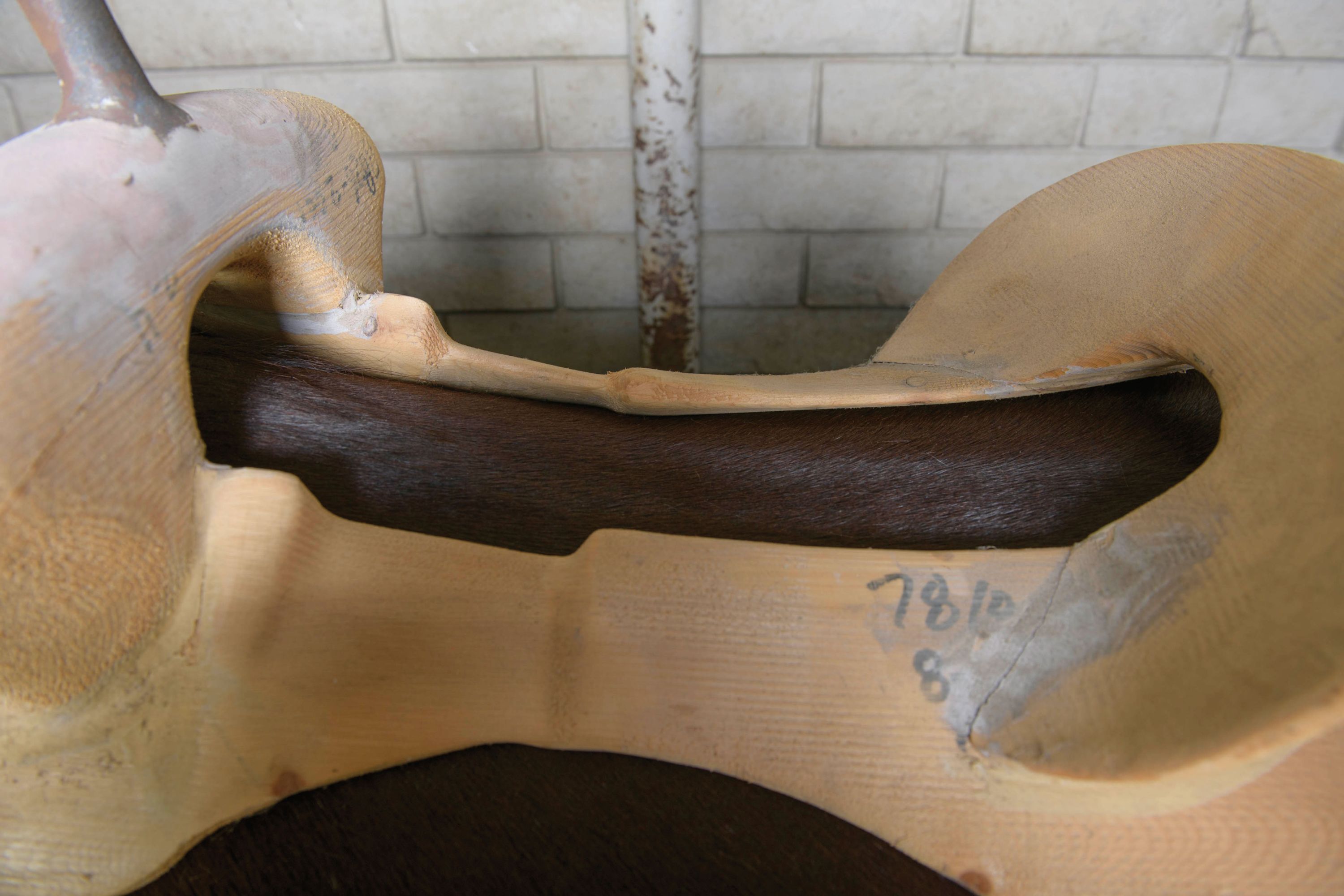
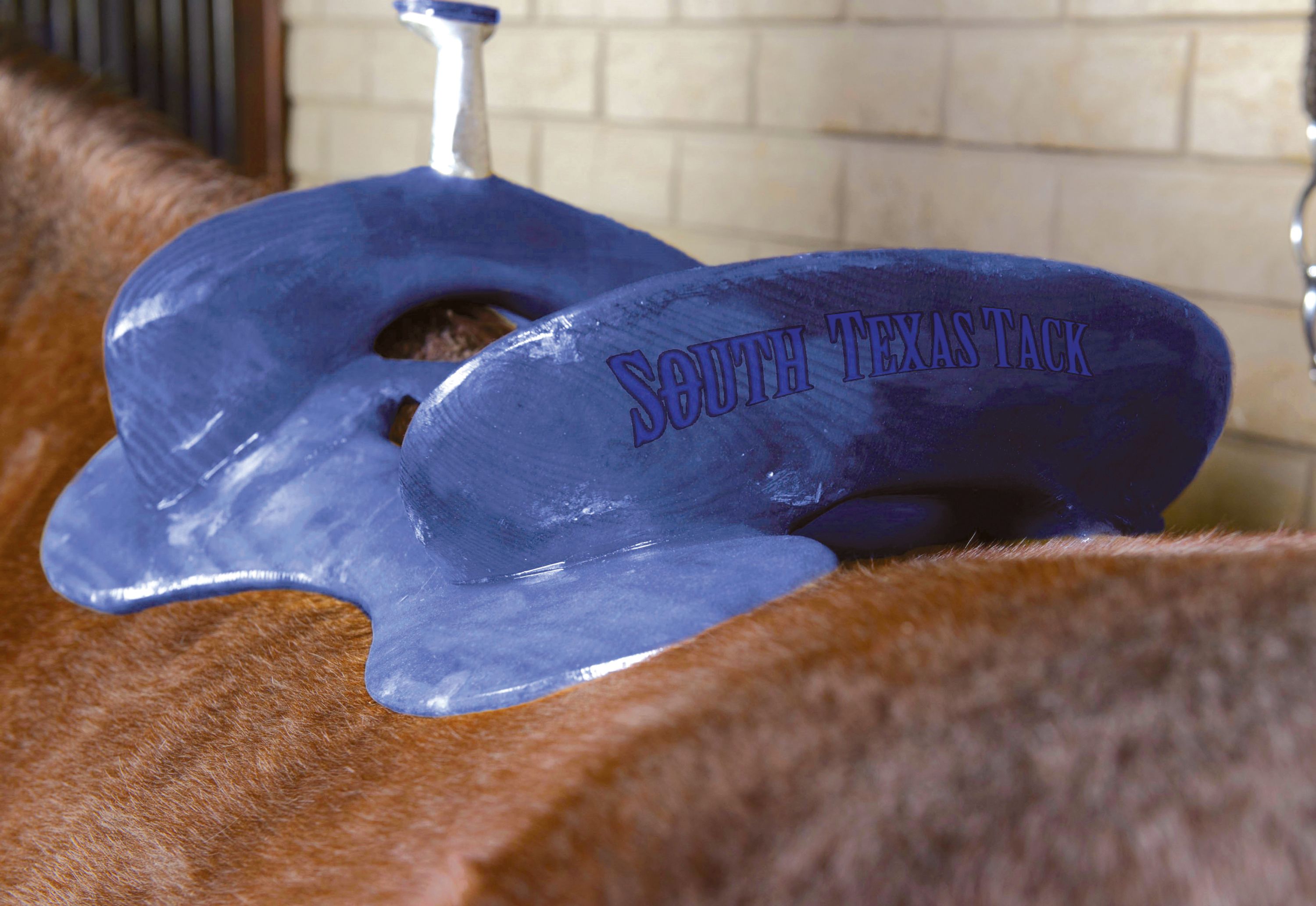
Next, we want to make sure the back of the saddle is down, in contact with the horse. We don’t focus there first, because a saddle can sit down in back and still be incorrect. But if we know the front is good, meaning the flare, gullet and bars are all correct, plus the back is also down—we have a successful fit. If the back of the saddle is kicked up at all, it is too narrow for the horse and on occasion has too much rock or sway to the bar.
Finally, we stand behind the horse and look from the tail over the back. We want to make sure the rear housing/skirt is the same angle as the horse and not too flat or spread out like wings. The saddle is a continuation of the bar angle. We want every square inch of the bars to have full contact. If that angle is wrong, the saddle won’t have a nice concave shape over the horse’s back. We want every square inch of the saddle to have full contact. (2)
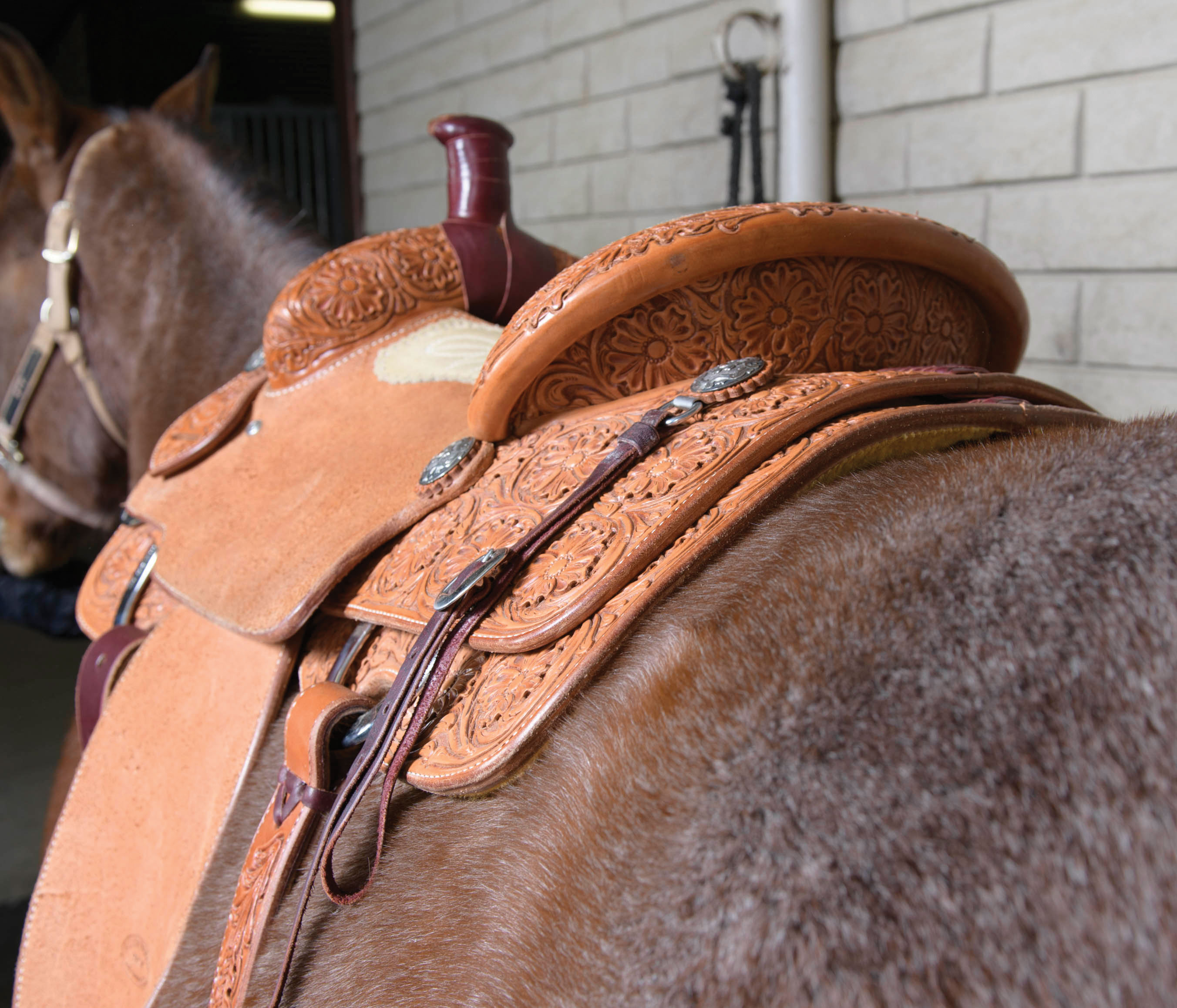
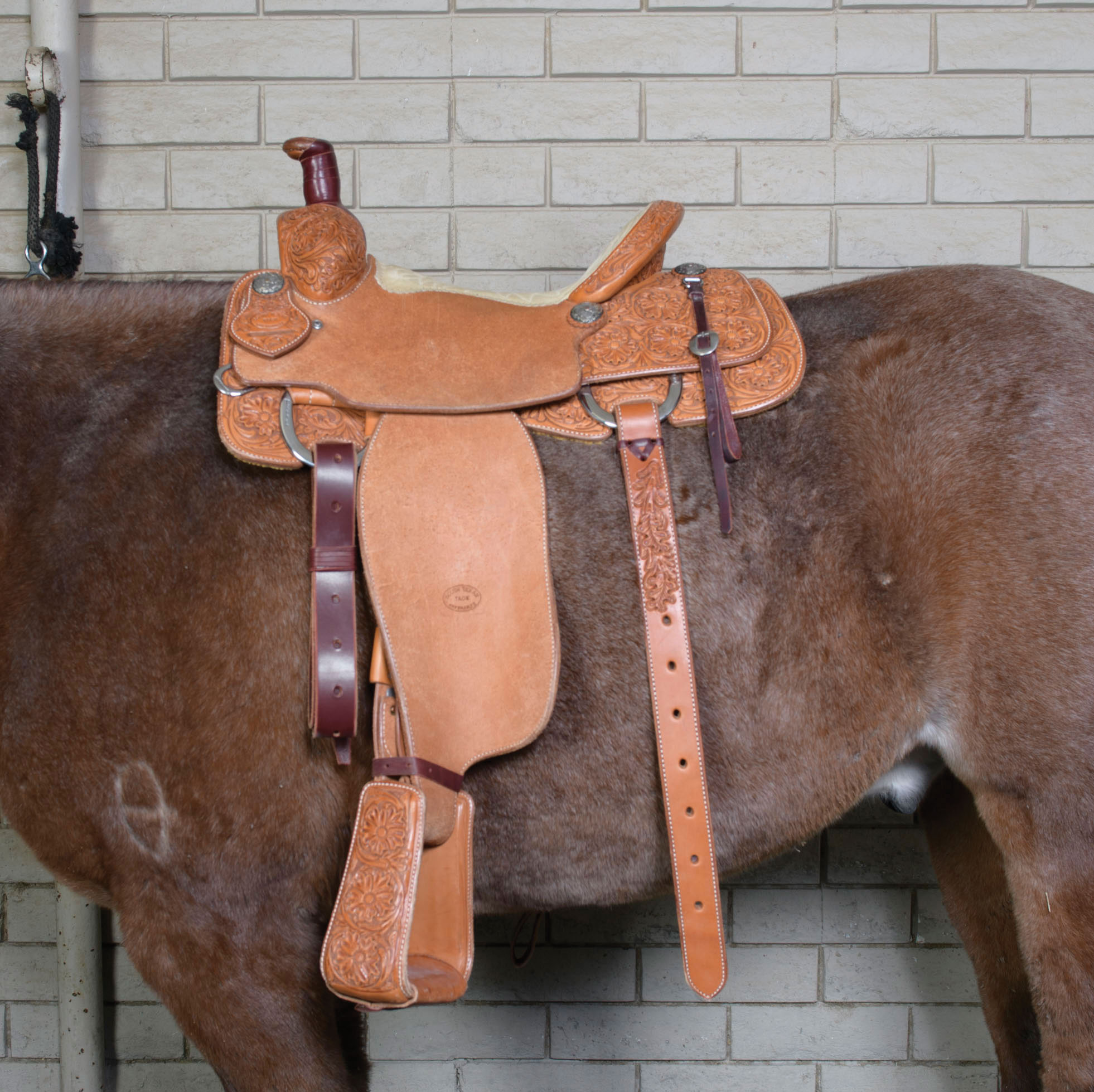
Once we are confident in how the saddle fits, we look at the saddle pad. The type we recommend can vary. For instance, if we are talking to a recreational rider who only saddles up twice a month, a nice contour pad is probably adequate. A good rule of thumb is: do not over pad the horse. The higher the saddle gets up off the horse, the more you de-leverage the horse. (See “Pad stacking” in Mistakes, Myths and Challenges section.)
The South Texas Tack saddle fit article that was recently published bears “Nothing to Hide” in the 2018 Lets Rope Magalogue. If you haven’t taken time to read here is your chance. The Saddle fit article holds nothing back. As Steve explains in the article a good fitting saddle will not only help your horse’s performance but keep your horse from getting sore. Steve and I have spent our fair share of dollars keeping horses sound and have learned over the years that the first place to start is to make sure your saddle fits properly. Make the right saddle investment for your horse and yourself. Steve and the STT Team are happy to schedule a time to do a saddle fit or make a recommendation. Give us a call or come by the store in Brenham, Tx.
As always, come see us. I would love to hear from you.
For the Love of Horses
Nancy

